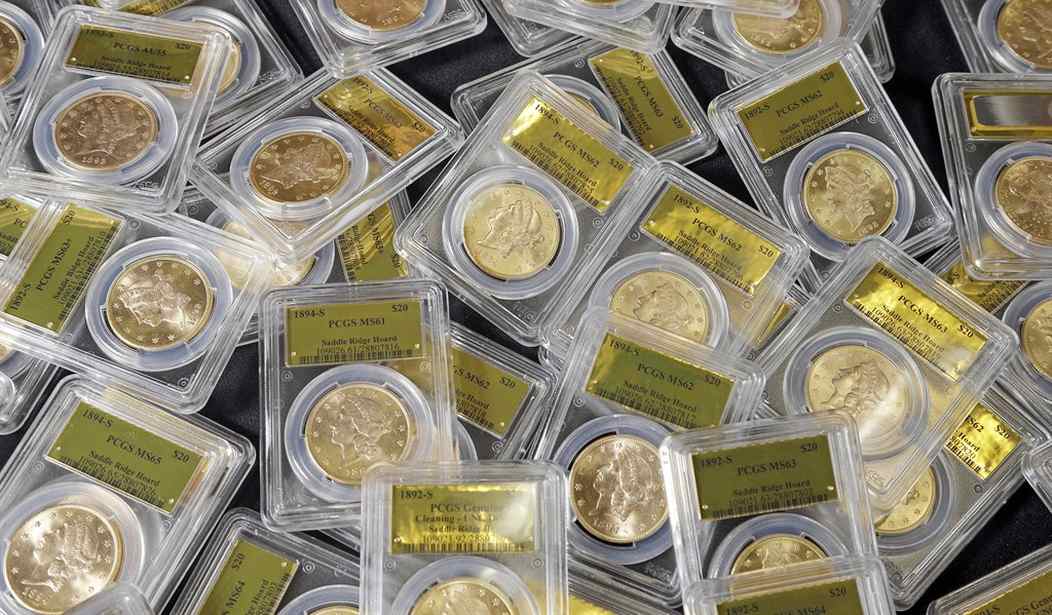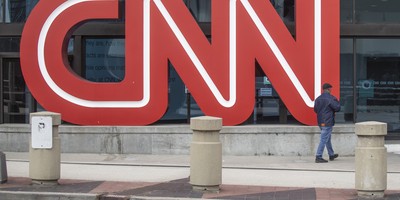February 2016- Week 1 Edition
Gold rose again last week to close January at $1,118 per ounce, up 5.3% in January. Meanwhile, the Dow Jones and S&P stock indexes were each down over 5%, averaging a 5.3% loss. Therefore, gold has earned a 10.6% advantage over stocks so far in 2016. One of the main reasons for gold’s advantage is the surprising decline in many global interest rates. When the Fed raised rates in December, investors had assumed they would keep raising rates and then other countries might follow. Instead, Japan surprisingly reduced its key short-term rate to -0.1% from +0.1%. Now there are five major central banks that impose negative interest rates on overnight bank money: The European Central Bank (ECB), the Bank of Japan and central banks in Switzerland, Denmark and Sweden. Last Friday, former Federal Reserve Chairman Ben Bernanke told MarketWatch that the U.S. Federal Reserve ought to consider negative rates as well. With so many key currencies earning less than zero, gold enjoys a very real advantage over paper money.
Tooth Fairy Index Exposes Obama’s Weak EconomyWhen you stop to think about it, almost every child in America collects coins at one time or another – from The Tooth Fairy.
Recommended
True, it’s not the same as searching through Dad’s pocket change for wheat-ears Lincoln cents, silver Roosevelt dimes or Bicentennial quarters. But it does bring kids in contact with coins – and, if they’re lucky, paper money – on a fairly regular basis until they finally lose all their baby teeth.
The Tooth Fairy’s kindness doesn’t transform every young recipient into a collector, but the coins I found under my pillow certainly reinforced my own early interest in our hobby.
I was 7 at the start of the 1960s, so my tooth-shedding years spanned a time when silver coins were still being used in circulation. Typically, The Tooth Fairy (or Ray and Evelyn Fuljenz, my dad and mom) left a shiny new silver quarter under my pillow every time I parted with one of my baby teeth.
Silver coins were on the way out by the time I had a full set of permanent teeth (not counting my wisdom teeth), but by then those nocturnal gifts had helped draw me into the hobby – and by the end of the ’60s, I was actively acquiring coins for my collection and attending meetings of a local club.
Did those quarters under my pillow spark my interest? Not by themselves. But they played an important part in introducing me to a lifelong source of satisfaction and setting me on the path that led to a highly enjoyable career.
To some, The Tooth Fairy might seem like a frivolous topic for discussion. One Wikipedia entry describes her as “a fantasy figure of early childhood” who, by implication, should be taken lightly (if she’s considered at all).
On the other hand, some take her very seriously – including, somewhat surprisingly, the Visa credit-card company, which prepares an annual index tracking how much money The Tooth Fairy leaves, on average, under the pillows of newly gap-toothed American children.
The most recent Visa survey, last May and June, involved telephone interviews with 4,000 American parents – hardly a casual process. It found that as of last spring, The Tooth Fairy was leaving an average of $3.19 under children’s pillows in exchange for their freshly lost teeth. That was a reduction from $3.43 the previous year, suggesting that the sluggish economy still has many Americans down in the mouth. The “fairy dust” was lower for the second year in a row, after hitting a high of $3.70 in 2013.
“The Tooth Fairy is finally fluttering back to earth,” observed Nat Sillin, Visa’s director of global education.
Visa has been conducting such surveys since 2009, and presumably finds the data useful in its constant monitoring of American consumers’ spending habits.
According to Visa, the typical American child figures to extract a total of $64 from The Tooth Fairy over his or her “career.”
While $3.19 was the average “pillow payoff” last year, Visa found that individual rewards varied widely:
- 5% of parents left $20 or more per tooth
- 20% left a $5 bill
- 32% left a $1 bill
- 10% failed (or forgot) to leave anything
- The rest left random amounts
Fathers were more generous than mothers, leaving an average of $3.63 per tooth under their children’s pillows, while moms left just $2.87. This was in line with the pattern of previous years.
As you might expect, family income has a direct bearing on the size of the molar money. Visa found that in families making more than $75,000 a year, kids got an average of $3.46 per tooth last year, while the figure dropped to $3.07 in families making less than that amount.
There also was disparity based on geography. Kids in the Northeast got the most – an average of $3.56 per tooth – while those in the South got just $3.07, the lowest amount anywhere in the country.
For my money. The Tooth Fairy is the hardest-working gift-giver in the world of imagination. Santa Claus typically rings a bell on street corners for a few days in December and works extremely hard on Christmas Eve – but The Tooth Fairy makes her rounds every night of the year. A warren of Easter Bunnies delivers lots of Easter eggs one Sunday morning every spring, but The Tooth Fairy delights thousands of children every morning of the year.
President Barack Obama claims the U.S. economy has improved in recent years. But The Tooth Fairy Index casts doubt on that assertion.
Going back to those silver quarters I received in the early 1960s, each is worth more than $3 today as precious metal with silver selling for roughly $14 an ounce – so the $3.19 in base-metal coinage now being left under lucky children’s pillows doesn’t represent an advance. I’m sure glad The Tooth Fairy put silver coins under my pillow. They are now worth about 13 times their face value.
President Lyndon Johnson was so wrong in July 1965 when he said it would be pointless for Americans to hoard silver coins, sternly warning: “There will be no profit in holding them out of circulation for their silver content.”
A 1965 “clad” quarter is still worth just 25 cents, and so are all the quarters found in pocket change today. I’m sure glad The Tooth Fairy put silver coins under my pillow and not clad coins.
Paying small rewards when children lose their baby teeth is a tradition dating back many centuries.
It’s said that the Vikings paid children for their teeth because these and other items belonging to youngsters were thought to bring good luck in battle. Scandinavian warriors are known to have hung children’s teeth on strings around their necks for this reason. Nordic countries also have had a long tradition of tand-fé – or a “tooth fee” – being paid upon the loss of a child’s first tooth.
The Tooth Fairy has competition in the pillow payoff business. In Spanish-speaking countries, for example, she plays second fiddle to an imaginary rodent known as Ratoncito Pérez (“Pérez Mouse” in English), who is said to have originated in Madrid, the capital of Spain, in 1894. Children who lose teeth in these countries place them under their pillows – but it is Señor Pérez, not The Tooth Fairy, who replaces them with gifts.
Through the years, the tables have been turned in some cultures, where the teeth of creatures such as sharks, whales, wild dogs and pigs have been used as “odd and curious” forms of money.
Even today, dolphins’ teeth are widely used as a medium of exchange in the Solomon Islands. “Dolphin teeth are like gold” in that island chain, according to one account. Sadly, demand is so great that unscrupulous entrepreneurs are killing dolphins just to harvest their teeth.
I have two dogs and three cats, and I deplore animal abuse, so I want no part of these. I’ll take silver quarters – or coins of like intrinsic value – any time.
Thankfully, The Tooth Fairy seems to feel the same.
Steve Forbes: Gold Is “An Insurance Policy”“In terms of gold, unless you're a jeweler, I see it as an insurance policy,” said Steve Forbes, editor-in-chief of Forbes Magazine and CEO of Forbes Inc.
“It [gold] doesn't build new factories or things like that, new software. What it is, is insurance that if things really go wrong you've got something that will balance your portfolio. So whether it's five percent, ten percent, it shouldn't be dominating your portfolio. But since you cannot trust this right now, what politicians do, what you have working out here is a situation where yes, the price of gold has come down since 2011 when it looked like the U.S. government might default, but today in this kind of environment, is probably a good time. Not that you're going to make quick money on it, but it's like an insurance policy. You hope it doesn't have to be used, but if it does you've got it.”
Forbes made the comments in an interview with Mike Gleason, director of Money Metals Exchange.
Forbes added a plug for the gold standard. “Money measures value the way scales measure weight or clocks measure time or rulers measure space and length, and it works best when it is stable. The best way to get stable money…is precisely to link it to gold the way we did for a hundred and eighty years.”
If we go on a gold standard, gold will increase in value substantially.

























Join the conversation as a VIP Member